Have you ever walked into a room filled with healthy plants and felt instantly better? It's not just in your head. That feeling of life and energy is exactly what we work with in Feng Shui. If you love plants and want to create a home that looks beautiful and supports your well-being, this guide is for you. So, what are feng shui house plants and how do they work? Simply put, they are living tools that help improve the flow of positive energy, called Qi, in your home. By carefully choosing and placing certain plants, you can actively create better health, attract money, and build harmony. This article will walk you through everything, from understanding the basic ideas of Qi to picking the perfect plants for your goals and placing them where they work best.
Basic Ideas About Plants

To really use the power of plants in your home, we first need to understand the basic concepts that make them such strong Feng Shui helpers. This knowledge helps you move beyond just following a list of rules and start making smart, informed choices that are right for your unique space and life.
Understanding Qi
At the center of Feng Shui is the idea of Qi (pronounced "chee"). Think of it as the invisible life energy that flows through everything in the universe, including your home. Like a river, Qi can be bright and flowing, which we call Sheng Qi, or it can become stuck and blocked, creating negative Sha Qi. A home filled with Sheng Qi feels alive, supportive, and uplifting, while a home with Sha Qi can feel heavy, draining, and blocking. The main goal of Feng Shui is to increase the presence and smooth flow of Sheng Qi. Healthy, living plants are one of the most powerful and direct ways to bring this energy into a space. They are the living example of bright Sheng Qi, constantly growing, breathing, and filling your home with life.
The Bagua Map
The Bagua is the energy blueprint of your home. It's a basic Feng Shui tool that we use to study and understand a space. This energy map is divided into nine areas, or "guas," each matching a important part of your life. By understanding this map, you can identify which part of your home influences specific areas of your life and use plants to activate them.
The nine Bagua areas are:
* Zhen: Family & Health
* Xun: Wealth & Prosperity
* Qian: Helpful People & Travel
* Kun: Love & Relationships
* Li: Fame & Reputation
* Kan: Career & Life Path
* Gen: Knowledge & Self-Growth
* Dui: Children & Creativity
* Tai Qi (Center): Overall Well-being
To use the map, you line it up with your home's floor plan based on where your front door is. The bottom of the map (Kan, Gen, Dui) lines up with the wall that has your main entrance. Once placed over your home, you can see which rooms or corners fall into each life area, giving you a clear guide for placing your plants.
The Five Elements
Feng Shui is also about balancing elements. The universe is seen as a moving mix of five key elements: Wood, Fire, Earth, Metal, and Water. Each element has its own special energy, and a balanced home has a healthy mix of all five. Plants are the main representation of the Wood element. The Wood element means growth, life, expansion, and kindness. Its upward energy helps inspire personal growth and action. We can use plants (Wood) to carefully balance the elements in a room. For example, in an area where you want more passion and recognition (Fire), adding plants can help because Wood feeds Fire in the creative cycle. Similarly, placing plants near a water feature nourishes the Wood element, as Water feeds Wood, creating a helpful relationship that improves growth and energy.
Best Feng Shui Plants
Now that we understand the 'why,' let's explore the 'what.' Choosing the right plant is important for targeting specific life goals. Here is our carefully chosen list of the best feng shui house plants, organized by the energy they most effectively create.
For Wealth and Prosperity
To activate the Xun area of your Bagua (the far-left corner from your front door), use plants with rounded, coin-like leaves that represent wealth and abundance.
-
Money Tree (Pachira aquatica): This is a classic Feng Shui favorite. Its braided trunk is said to lock in good fortune, and its special five-lobed leaves are believed to represent the five elements of Feng Shui, creating a small, balanced ecosystem of abundance. It's a powerful symbol for attracting and keeping wealth.
-
Jade Plant (Crassula ovata): With its bright green, thick leaves that look like jade coins, this succulent is a strong symbol of wealth and prosperity. The Jade Plant is slow-growing but incredibly tough, teaching the lesson of building wealth through steady persistence. It's an excellent addition to a home office or the wealth corner of your living room.
-
Pilea Peperomioides (Chinese Money Plant): This charming plant has become very popular for good reason. Its perfectly round, coin-like leaves on long, delicate stems create a feeling of bright, cheerful energy. It is believed to attract financial abundance and is often shared among friends to spread good fortune.
For Love and Relationships
To improve harmony and connection in your life, place plants with soft, rounded leaves or heart-shaped features in the Kun area (the far-right corner from your front door).
-
Peace Lily (Spathiphyllum): As its name suggests, the Peace Lily is excellent for promoting a calm, harmonious atmosphere. Its elegant white flowers, which look like a flag of peace, are symbols of peace. This plant is also a powerful air cleaner, cleaning the energetic and physical environment to support healthy, peaceful relationships.
-
Anthurium: Known for its striking, open, heart-shaped flowers (which are actually spathes), the Anthurium is a powerful activator for passion and romance. Its bright red or pink color connects directly to the heart and encourages long-lasting love and admiration. Place it in your relationship corner or bedroom to invite more loving energy.
-
Orchids: Orchids are symbols of refined beauty, fertility, and pure love. In Feng Shui, they represent the ideal partner—graceful, noble, and strong. They require thoughtful care, a quality that mirrors the attention and dedication needed to maintain a healthy partnership. Their delicate and exotic beauty brings a special kind of loving energy to a space.
For Health and Family
To support overall well-being and family harmony, focus on placing strong, upward-growing plants in the Zhen (mid-left) and Tai Qi (center) areas of your home.
-
Snake Plant (Dracaena trifasciata): The Snake Plant is a Feng Shui powerhouse. Its strong, sword-like leaves grow strongly upwards, representing strong, protective energy and upward growth. It is incredibly tough and easy to care for. Furthermore, it is a well-known air purifier; NASA research confirmed its ability to filter common indoor air pollutants like formaldehyde and benzene, directly contributing to a healthier home environment.
-
Lucky Bamboo (Dracaena sanderiana): Lucky Bamboo is not actually bamboo, but it is a symbol of toughness, flexibility, and good fortune. The number of stalks has meaning: two stalks for love, three for happiness, wealth, and longevity, and five for all-around health. Its upright growth represents honorable and virtuous energy, making it ideal for the family and health areas.
-
Rubber Plant (Ficus elastica): With its large, dark green, rounded leaves, the Rubber Plant is excellent for promoting a sense of calm and removing negativity. The soft, curved shape of its leaves helps to soothe energy in a space, making it perfect for areas of relaxation. It is also an effective air purifier, good at removing toxins and contributing to the physical health of the family.
Smart Plant Placement
Knowing which plants to choose is only half the battle. Where you place them is just as important for directing the flow of Qi and getting the most positive effects. Here is a room-by-room guide to smart plant placement.
The Entryway
Your home's main entrance is called the "Mouth of Qi." This is where all energy enters your space.
* Do: Place a single, bright, and upward-growing plant near the entrance. A healthy Snake Plant or a tall Rubber Plant can act as a guardian, drawing in positive Sheng Qi and filtering out any negative energy from outside.
* Don't: Never allow a dead, dying, or dusty plant to sit by the entrance. This will block energy right at the source and block opportunities from entering your life.
The Living Room
This is a social space where family and friends gather. The goal is to create a harmonious and welcoming atmosphere.
* Do: Use larger floor plants, like a Fiddle Leaf Fig or a Monstera, in the corners of the room. Corners are where Qi can become stuck, and a large plant will soften sharp angles and keep the energy flowing smoothly.
* Don't: Avoid crowding the room with too many plants. While plants are good, too many can create clutter, which blocks the flow of energy and can make a space feel chaotic rather than calm. Balance is key.
The Home Office
Your home office is a hub for career, focus, and financial growth. The energy here should be active and clear.
* Do: Place a Money Tree or Jade Plant in the wealth corner of your office (the far-left corner from the door) to activate prosperity. A small, bright plant on your desk can also stimulate creativity and success.
* Don't: Avoid using pointy or spiky plants, like a cactus, aimed directly at where you sit. This can create subtle "attacking" energy, or poison arrows, that may lead to stress and conflict in your work.
The Bedroom
The bedroom is a sanctuary for rest and renewal. Its energy should be primarily Yin—calm, soft, and passive.
* Do: If you wish to have plants in the bedroom, be very selective. One or two small plants with soft leaves, like a small Peace Lily, placed far from the bed is acceptable.

- Don't: Avoid turning your bedroom into a jungle. Traditional Feng Shui advises against having too many plants in the bedroom because their active, upward-growing Yang energy can disrupt the restful Yin energy required for deep, restorative sleep.
Common Mistakes to Avoid
As you begin your journey with feng shui house plants, it's easy to make a few common mistakes that can accidentally create the opposite effect of what you're trying to achieve. Here's what to watch out for.
The Drain of Dying Plants
This is the most important rule in Feng Shui plant care. A sick, dying, or neglected plant does not just stop providing good energy; it actively creates negative, stuck Sha Qi. It represents dying energy in the area of your life that matches its Bagua location. The instruction here is simple and non-negotiable: if you see a plant struggling, you must either do everything you can to revive it or you must replace it immediately. An empty spot is energetically better than a dying plant.
The Wrong Use of Spiky Plants
Plants with spikes, thorns, or very sharp points, such as cacti and some agave varieties, are not necessarily "bad." In Feng Shui, they are seen as creating a very protective, and sometimes aggressive, form of energy. This energy can be useful when placed carefully outside by a window or door to ward off negative influences or "poison arrows" from a sharp-angled neighboring building. However, they should never be placed inside a living room, bedroom, or dining area, and especially not pointing at where you sit, sleep, or eat. This creates confrontational Sha Qi that can lead to arguments and tension.
The Energy of Fake Plants
We understand the appeal of artificial plants—they require no maintenance and always look perfect. However, from an energetic perspective, they are essentially lifeless. Feng Shui is the practice of managing life force energy, or Qi. Plastic or silk plants are empty of this vital energy. While a perfect artificial plant is certainly better than a real, dying one, it offers no positive energetic benefit. It is simply a static object. If you must use them for decorative reasons, do so sparingly and always prioritize real, living, breathing plants as your primary choice for enhancing your home's vitality.
A Case Study in Transformation
Theory is important, but seeing the results in action is what truly builds confidence. We want to share a story that shows just how powerful these principles can be when applied correctly.
The Client's Challenge
A couple recently approached us at THE QI FLOW team for a consultation. They described a persistent feeling of being "stuck." Their careers felt stagnant, their creative projects were stalled, and despite keeping a tidy house, the atmosphere felt heavy and uninspiring. They were doing all the right things in their professional lives but felt like they were going nowhere.
Our Expert Diagnosis
Our team conducted a full energy assessment of their home. We quickly identified two primary issues that were contributing to their feeling of being stuck. First, the area near their front door, corresponding to the Career (Kan) area of the Bagua, was completely empty and lacked any bright energy. Second, a large, sharp-cornered bookshelf in their living room was pointing directly at their sofa, creating a "poison arrow" of Sha Qi right in their Relationship (Kun) area.
The Strategic Prescription
Instead of recommending a major overhaul, we prescribed a few simple, strategic changes focused entirely on plants. Our prescription was clear and actionable:
- Action 1: We had them place a tall, healthy Snake Plant in the Career area by the entrance. Its strong, upward-growing form was chosen to create a powerful sense of upward momentum and to purify the energy entering their home.
- Action 2: To soften the aggressive energy from the bookshelf, we recommended placing a lush Peace Lily on a small stand directly in front of the sharp corner. Its soft leaves and peaceful energy would absorb and transform the Sha Qi, promoting harmony in their personal space.
- Action 3: Finally, we advised placing a small, thriving Jade Plant on the desk in the husband's home office to directly activate wealth and opportunity energy related to his work.
The Real Result
The shift was remarkable. Within a few months, the clients reported that the entire feel of their home had changed—it felt lighter, brighter, and more supportive. More importantly, they experienced real shifts in their lives. The wife landed a new freelance project she had been hoping for, and the husband received unexpected recognition at work that led to a promotion. They felt more motivated and harmonious as a couple. This case powerfully demonstrates how a few small, intentional changes with living plants can have a profound and positive impact on your life's energy and opportunities.
Building Your Best Life
As we've explored, Feng Shui is not about strict rules but about creating a conscious, harmonious relationship with your environment. It's about understanding that your home is a living, breathing extension of yourself. The core principles are simple: encourage the flow of positive Qi, use the Bagua map as your guide, and remember that healthy, living plants are your most powerful allies in this process. By placing the right plant in the right spot, you are not just decorating; you are actively setting an intention for growth, health, and abundance. As you begin to nurture your plants, you will find that you are also nurturing yourself, building a home and a life that truly thrives.
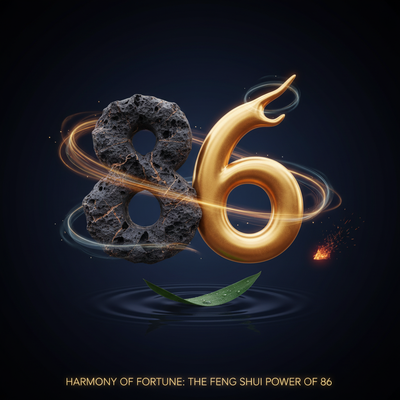
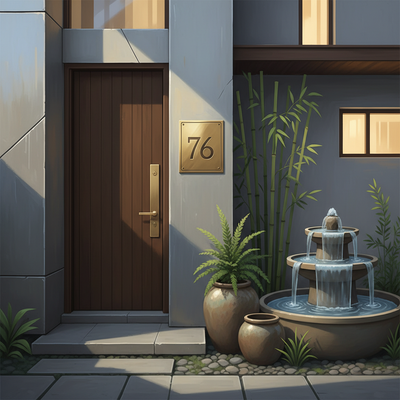
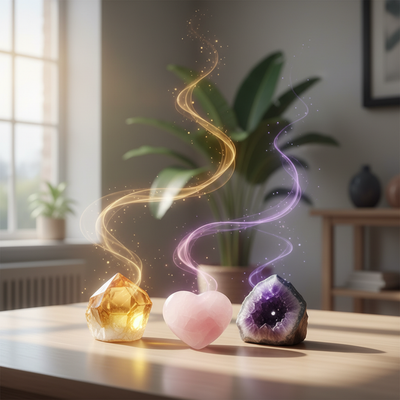
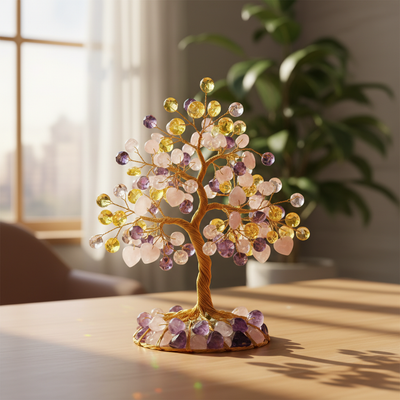
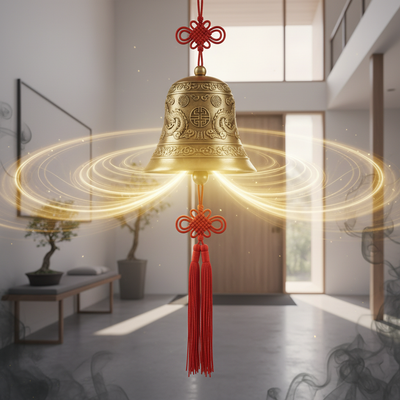



0 comments